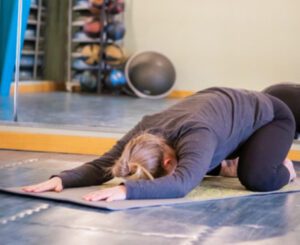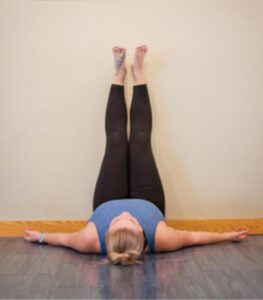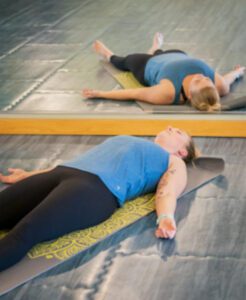1 in 3 Americans experience some form of difficulty sleeping. That number only increases when you factor in parental status, income, profession, and overall health. The common denominator here? Stress. We all know yoga helps to reduce stress, so it’s no surprise that yoga can help you achieve better quality sleep.
The slightest stressor, such as a work email, can trigger a hormonal response in your body. This is not necessarily a bad thing, as the hormones our body responds with are intended to protect us with a fight or flight reaction. Bedtime, however, is not the time to have this rushing through your body.
When it comes to sleep, quality is as valuable as quantity. If by the end of the day, you are so exhausted that you crash and fall asleep with ease, your mind may still be going a mile a minute and therefore not allowing you quality rest.
If we are able to calm the mind before bedtime, we better our chances of falling asleep, staying asleep, and getting quality sleep.
Here are a few yoga poses you can do in bed or even on the floor in your bedroom.
- Easy Pose (Sukhasana)

Begin seated with legs crossed, stacked, or butterflied out with the soles of your feet touching. Take a moment here to find your breath. Breathe in your nose, out your mouth. With each exhale, release any tension and allow yourself to be completely in this moment. Stay here for a few breaths. Release any tension in your face and shoulders, letting the weight of the day melt away.
- Child’s Pose (Balasana)

Starting on your knees, sit back onto your heels, spread knees apart as far as needed to be able to fold forward and rest your chest and abdomen between them, arms stretched out in front of you, or resting at your sides. Take a few breaths here, in the nose, out the mouth, and remind yourself why you’re doing this. Appreciate the release of opening your hips and feel free to adjust the width of your knees and arm position for optimal comfort. Being an adult is hard, let yourself settle into Child’s Pose for the moment.
- Legs-Up-the-Wall Pose (Viparita Karani)

Find an open wall in your space. Seated, scoot one hip up as close to the wall as you can and roll onto your back bringing your legs up the wall leaving your body in a 90 degree angle. Rest here, take a few breaths with your arms out to the sides, or if space is limited, place one hand on your heart – thank yourself for taking this time for you, and the other on your belly – feel it fill with each breath. You get many of the benefits of inversion here without the effort.
- Supine Spinal Twist (Supta Matsyendrasana)

Lying flat on the floor, bend your knees and drop them to each side for a few breaths. Place a pillow beneath your knees if necessary to allow you to fully settle into this gentle spinal twist. This pose can help alleviate back and neck tension, as well as sciatic pain. Physical tension can be just as much of a disruption to quality sleep as mental tension.
- Corpse Pose (Savasana)

This pose can and should be done in your bed. Lying flat on your back, arms resting out to your sides comfortably. Close your eyes, find your breath, inhaling the peaceful energy that you’ve created, exhaling any noise in your brain. Inhale gratitude for your awareness of what your body needs, exhale any doubts. Scan your body from your toes to your head, releasing any lingering tension you may encounter. There are many resources available for body scanning and beginner meditation. This one nicely summarizes what we are trying to accomplish with bedtime yoga.
https://www.mindful.org/beginners-body-scan-meditation/
Best of luck and sweet dreams!
Written by: Angela N

